Interview with Daniela Corcio: the designer behind Ikonostas
Interview with Daniela Corcio: the designer behind Ikonostas
Ikonostas is a brand distinguished by an experimental approach to lingerie and tailoring. Daniela Corcio – founder and designer of the label – worked and collaborated with some of the most well-known fashion companies, such as Chloé, Proenza Schouler, Christian Lacroix and Vivienne Westwood. Now she is pushing the boundaries of luxury and femininity, and we interviewed her to discover how she is succeeding with it.
The very first thing that I would like to ask you is very simple, what does it mean to you the name you choose for your label, Ikonostas?
DC: Ikonostas is a greek word that means ‘icon stand’, it’s the wall of icons.
The name refers in particular to the title of an essay by Pavel Florenskji that I discovered during a journey in Russia. Florenskji talks about the painting of medieval Russian icons and their function as a threshold between the visible world and the invisible world of divinity.
The icons are the visible symbol of a spiritual world.
In a certain sense, I see the act of creation as my invisible world, I choose the body and its clothing as its visible expression. I always worked on research of past and modern icons, and from one icon idea I develop a collection, my wall of icons.
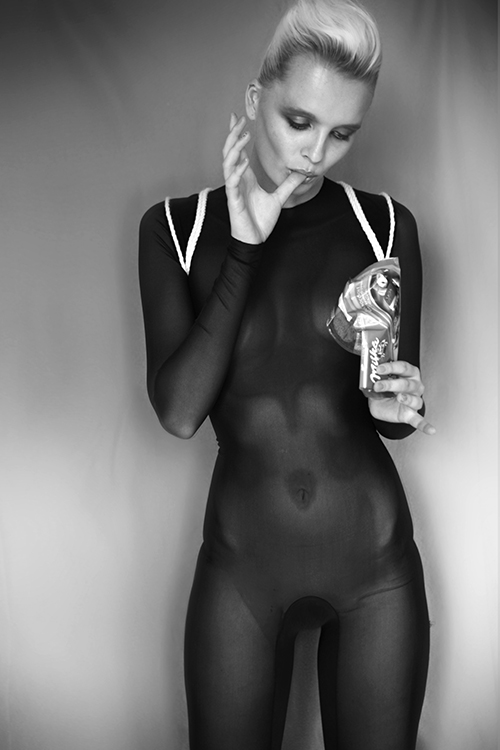 Lingerie could represents an uncommon choice for an upcoming designer, why did you choose to explore this specific field?
Lingerie could represents an uncommon choice for an upcoming designer, why did you choose to explore this specific field?
DC: It happened just random. I always loved corsets and I experimented new materials and shapes around this item from my student years.
In 2008 my corsets attracted the attention of the magazine Linea Intima that invited me to participate in a fashion show at Palazzo Strozzi, in Florence, as a representative of the city’s creativity. I was chosen among Europe’s most innovative lingerie designers.
I accepted, of course, but honestly I was worry, I hadn’t any experience in this field and my approach was unconventional, I mixed together materials as silk rubber and knitwear and I used the rules of tailoring to make lingerie pieces. I was a bit scared to receive boos, but, instead, I just received compliments and claps and the interest of American buyers.
It was a big surprise for me. Unfortunately I was forced to renounce at the big opportunity to show a full collection to the buyers because of a missing production company. I never imagined to continue to design lingerie, but press continued to talk about my show, and in 2010 I received a call from ‘Network Dessous’, they told me I was recognized as one of the best eight emerging lingerie designers in the world in terms of research and innovation. I had only three weeks to design and present a collection in a lingerie fair where I was invited to participate as a special guest. It seemed like they took play on me, again, but I am always in search of new challenges, so I did it. I received a positive feedback from the audience, and at that point a confirm for myself that I had to continue to experiment in this field. Collection after collection I discovered a new world that I love.
Luxury and Avant-garde are the two key elements of your brand, how do you express these features within your collections?
DC: Luxury: fabrics and making, both are made in Italy or France and a big eye for details; Avant-garde: researching and experimenting shapes, mixing West and East, adopting tailoring clothing rules for lingerie and lingerie materials and accessories to make clothes.
Lingerie is quite often associated with Burlesque and Pin Up Girls, however I think that you untie this connection thanks to a more minimalistic translation of lingerie. Did you make it on purpose? I mean, was it a stressing point for your work?
DC: I find a big difference between Burlesque and Boudoir, my work focuses on this last field, I create my pieces thinking to intimate moments. Ikonostas wants to wear elegant women. Also if I appreciate the world of Burlesque and Pin Up Girls I am not interested in frivolous trends but to embrace women with something more romantic, sometimes decadent, more intimate.
Do you think that this clean and tailored style represents your signature? If not, how would you define it?
DC: Tailoring, ironic and provocative.
The influence of Theatre, Art and Performance is an essential element in your collections. How do they inspire you?
DC: Yes, it’s absolutely impossible for me to be blind in terms of inspiration when I visit a museum, my spirit can be captured by different things, sometimes from the colors or graphic, others from the way a book is bound, from the technique of a painting, the shape of a sculpture etc., often is the story behind a painting or an opera that inspires me. Theatre is a fundamental part in my creative background, it’s the first work experience I had of communication through costumes and research of past eras.
I also worked in performances, visualizing concepts, the body is always been at the center of all my creations.
What is your main source of inspiration?
DC: Music! I usually listen only selected music and I am really careful to choose the right one when I am creating something, for me it’s a way to enter in intimacy with myself and to connect in one unique world spirit, brain, hands, touch and all the sensations that drive me in a new creation.
How do you create the stories and atmospheres behind your designs and also behind the photoshoots?
DC: I do a lot of research and I collect all the things I perceive around in a sort of archive in my mind, then, at at a certain point all the informations I absorbed as a sponge collapse in a collage of new ideas.
What kind of woman do you imagine when you are developing a new collection?
DC: A woman elegant and sexy at the same time, sophisticated but also ironic, a woman able to enjoy the life and that experiences her intimacy in a special way.
At the beginning of your career you worked for Vivienne Westwood. How this experience influenced your work?
DC: It’s the experience that influenced me more than any others. I start to work at her Gold Label as soon as I finish the University, I was only 23 years old. For me this was a great opportunity and also a past vision that became reality: I was 13, when I seen for the first time one of her fashion show at the TV and I thought ‘one day I will do something for this designer’. You can’t imagine the big emotion I felt when I met her in person the first time in her studio and I was introduced to her as the Head of Production for her label.
To work in contact with her, for 13 years and 28 collections, gave me the possibility to grow up really fast as a designer and also as a product woman, but not only, she encouraged my independent projects, she taught me to be proud of myself and to hazard. I consider her like my ‘Maestro’. It’s amazing to know your muse and to discover that she is exactly how she appears on the media, a great person.
The creative process behind the garments is different for every designer. How do you approach to a new project? Would you like to tell us a bit about your next one?
DC: I usually always start draping fabrics around the model, then I do an historical research on patterns that are connected to what my hands modelled.
Actually I am working on new shapes and cuts: the tops are inspired in part to butterflies wigs and in part to Japanese Kimono for the sleeves and to the Corean folk costumes for the neck opening, long laces are free and can be molded around the body in a sort of bondage motif, that you can play alone or with your partner.
The bottoms are more provocative, to put on without knickers, classic skirts shapes are combined with transparent mesh, heavy fabrics constrict hips and legs and the sensual part of the bottom explode out through an opening of hooks & eyes.
When you work on a new collection do you try to translate the latest trends or do you prefer to follow your own creative path?
DC: I prefer to follow my creative path, is more emotional and in this way I don’t put any limit to my mind.
You are based in Italy now, but you are keeping international attention on your label. Where would you like to expand your market?
DC: When I travel I always find inspiration in traditional costumes of the place I visit or in its current trends, I would love to expand my market all over the world, customizing my products for each country, translating in my creations what I see around.
To conclude our interview I would like to ask you some more questions about your personal tastes. Who is your favourite designer or fashion icon?
DC: Vivienne Westwood.
Some designers are inspired by a muse or celebrities. Who is a celebrity for whom you would like to create a garment?
D: Tilda Swinton.
What do you think about Made in Italy? Does it play any role in your work as an Italian designer?
DC: I try to pay homage to Made in Italy, a tradition that is being lost over the years because of mass market. To do this my pieces are all tailored.
Interview with Daniela Corcio: the designer behind Ikonostas


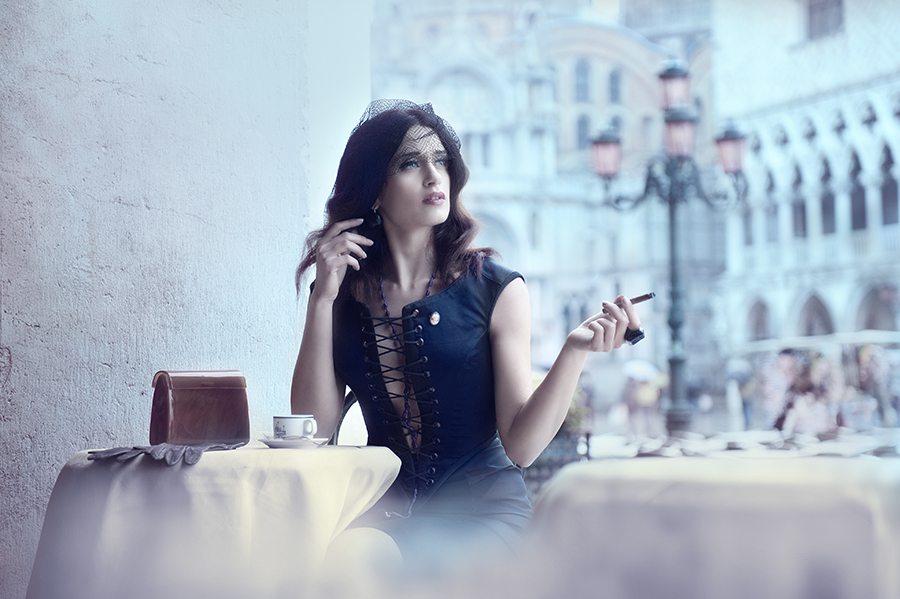
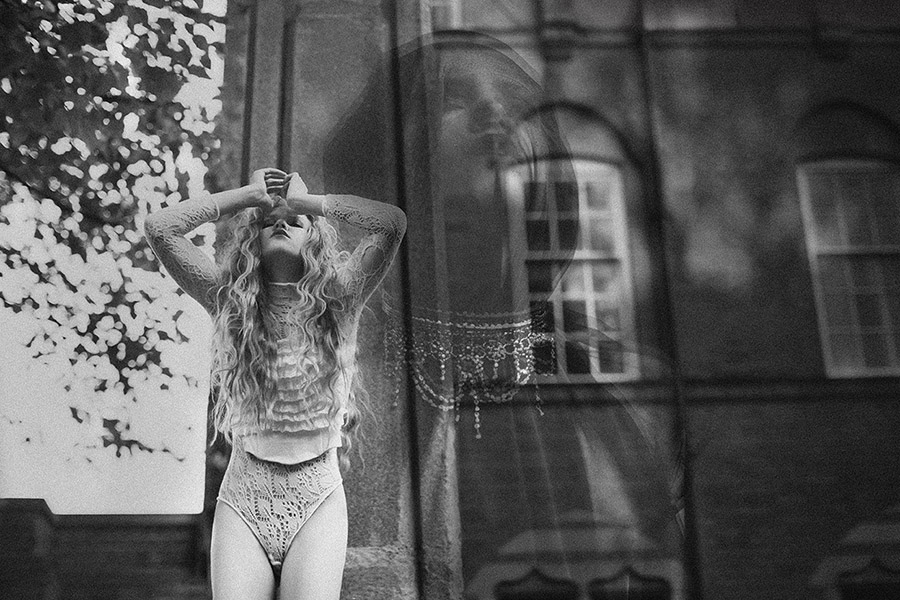
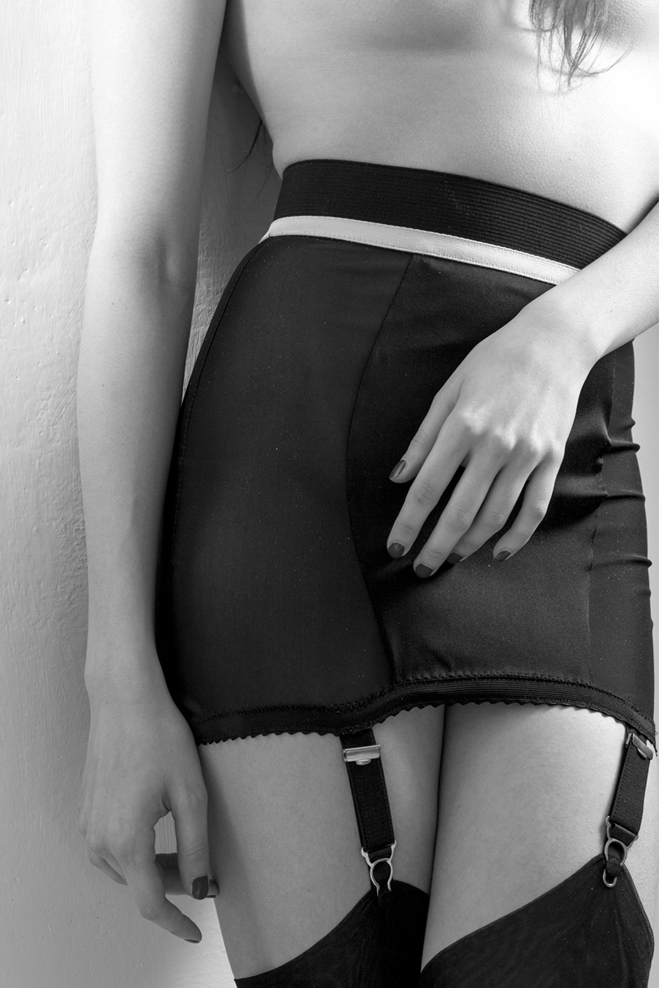
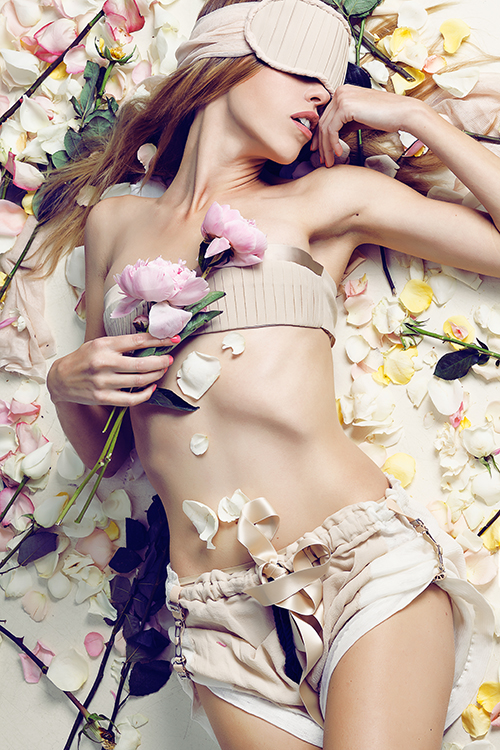
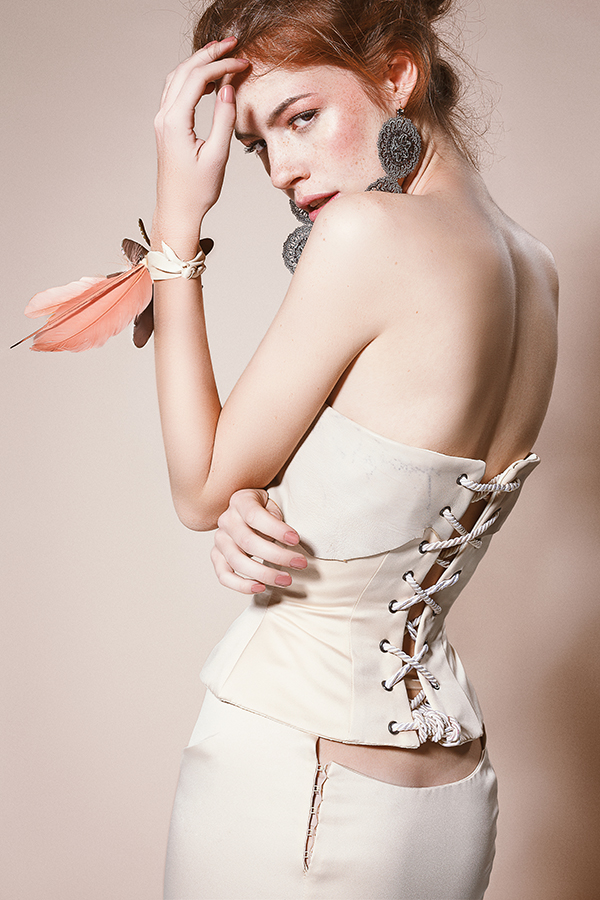
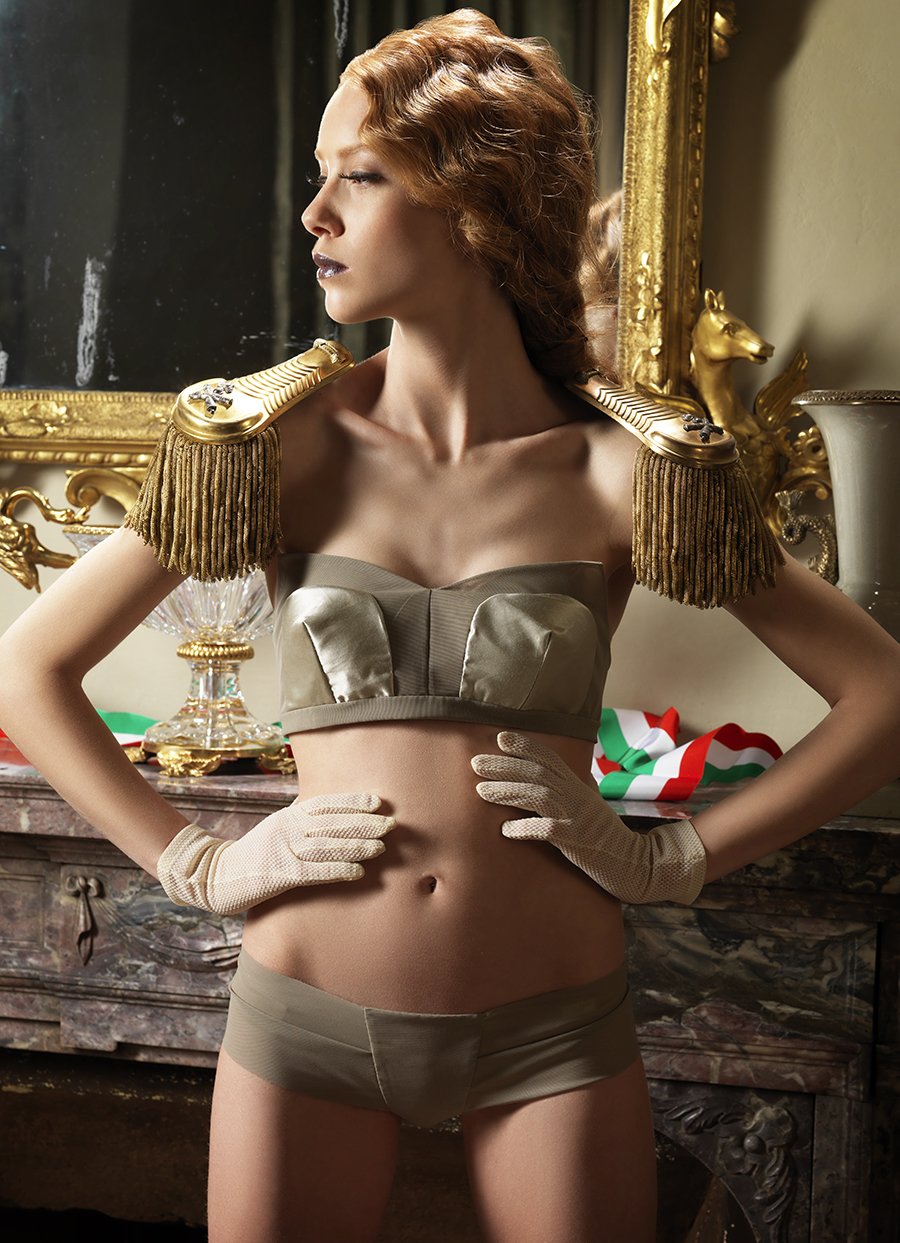
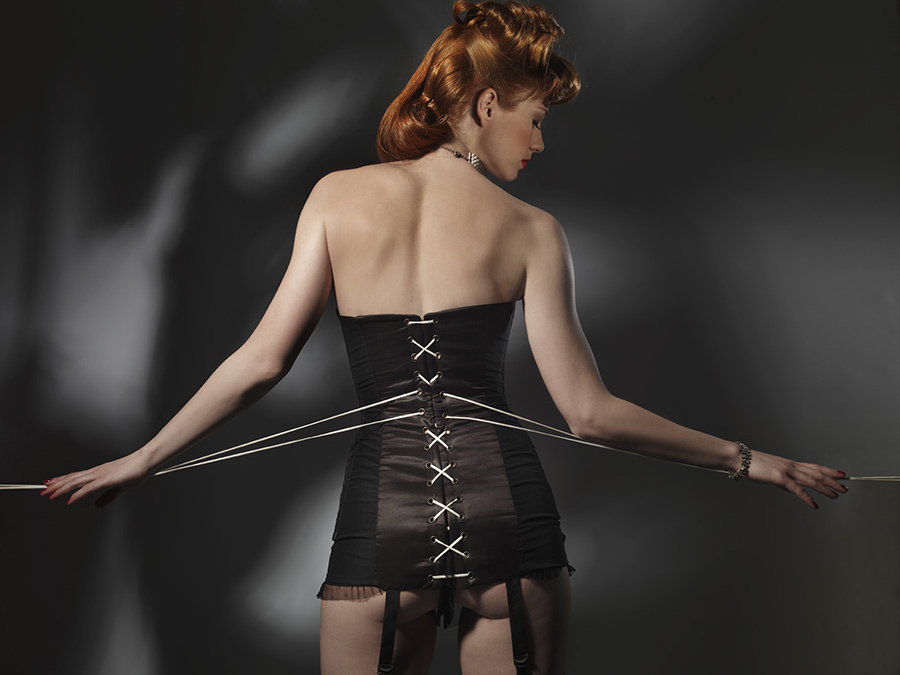
Pingback: Interviewing Daniela Corcio from Ikonostas for Catwalk Yourself | …More Than Odd Socks!